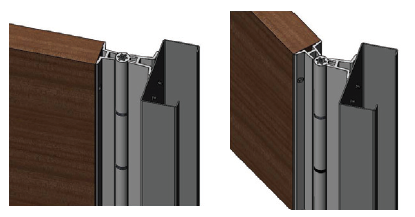The French word charniére (in German: “hinge” or “hinge joint”) itself has its origin in Latin.
The best known today are so-called concealed hinges and rod hinges, some of which are also referred to as furniture hinges. Special doors that perform special tasks are often equipped with appropriate hinges that support the functionality of the door. For example, entrance doors that are intended to secure access to the house (front doors) or to the apartment (apartment doors) are equipped with particularly secure front door hinges: so-called safety hinges.

Door hinge (Term hinge – the origin) – a type of door hardware
The term door fittings are often used in connection with door hinges. And not without reason: Strictly speaking, a door hinge is a part of a door fitting, as a door can be “fitted” with it.
Everything that a door can be fitted with counts as door fittings, i.e. hinges and straps as pivot bearings for the door leaf and lock, accessories and strike plate. Door fittings guarantee the movement (as the sum of opening and closing) on the one hand and the security of the door on the other.

Task and typical structure of door hinges
A joint that connects two fixed components in such a way that they can be moved is called a hinge. A door hinge therefore creates a movable connection between the door frame, which is fixedly mounted in the wall opening, and the movable door.
As the connecting piece between the door frame and the door leaf, the door hinge has to withstand enormous forces: It forms a bearing with a degree of freedom that indicates the number of possible movements of the joint. As such, the door hinge must, on the one hand, take up the load of the door leaf. On the other hand, the bearing must absorb the movement force.
A conventional door hinge typically consists of an axis and at least two bushings. So that the door hinge can be attached, it has straps. These, in turn, are provided with holes so, that the hinge can be fixed with nails or screws.




